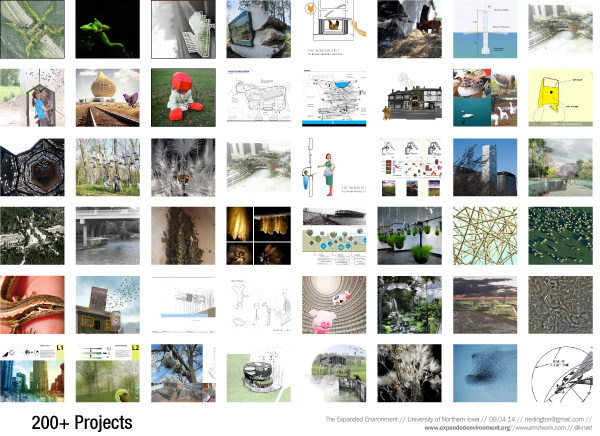On September 4th, 2014 Ned Dodington delivered the inaugural lecture at the University of Northern Iowa’s School of art to a filled auditorium of students, faculty and guests. A recording of the lecture, in full, can be viewed at the link below.
Ned Dodington Talk at University of Northern Iowa – September 4, 2014 from Bryan Van Donslear on Vimeo.
Mr. Dodington’s the talk “How to Design With Biology; Towards a biosynthetic design practice” expands upon themes found within the exhibition of Nature’s Toolbox, that is:
- What is biodiversity?
- Why is biodiversity important?
- How do humans affect biodiversity
- What can we learn from nature about how to flourish?
Rather than speaking directly towards these themes, Mr. Dodington refocuses the audience’s attention on the seemingly benign terms nature, human, and animal. Drawing on sources from Jacques Derrida, Paul Rabinow, and Donna Haraway, Mr. Dodington made the assertion that each of these words is far more complex than one normally understands and if taken at face value can radically undermine a serious inquiry into cross-species design practices. Going further, Mr. Dodington suggests that new words need to be created to describe our evolving understanding of life and living organisms and that efforts to study and interface with these areas, design, architecture, science in general, would also require reconceptualization.
Having established the “theoretical under-girding” of The Expanded Environment and the talk Mr. Dodington then demonstrates the application of this thinking in three works, The Terroir, Poly-Lawndale and Urban Aeries. Each work explores the implications of designing with, or for, a non-human subject and each also transgresses or complicates the typical boundaries of human/animal, nature/culture and art/architecture.
For the third and final component of the lecture, Mr. Dodington broadens the discussion to include works culled from The Expanded Environment. The works were first introduced according to one of three general categories: Synanthropic Habitats, Post-Animal Projects, and Soft Systems. Individual projects were then reviewed across these three groups.
The talk concludes with a reminder for artists and scientists to delve deeply into the conceptual waters of their studies and to resist taking over-arching and potentially reductionist words at face value.
More information about Nature’s Toolbox can be found at the previous post on The Expanded Environment.







